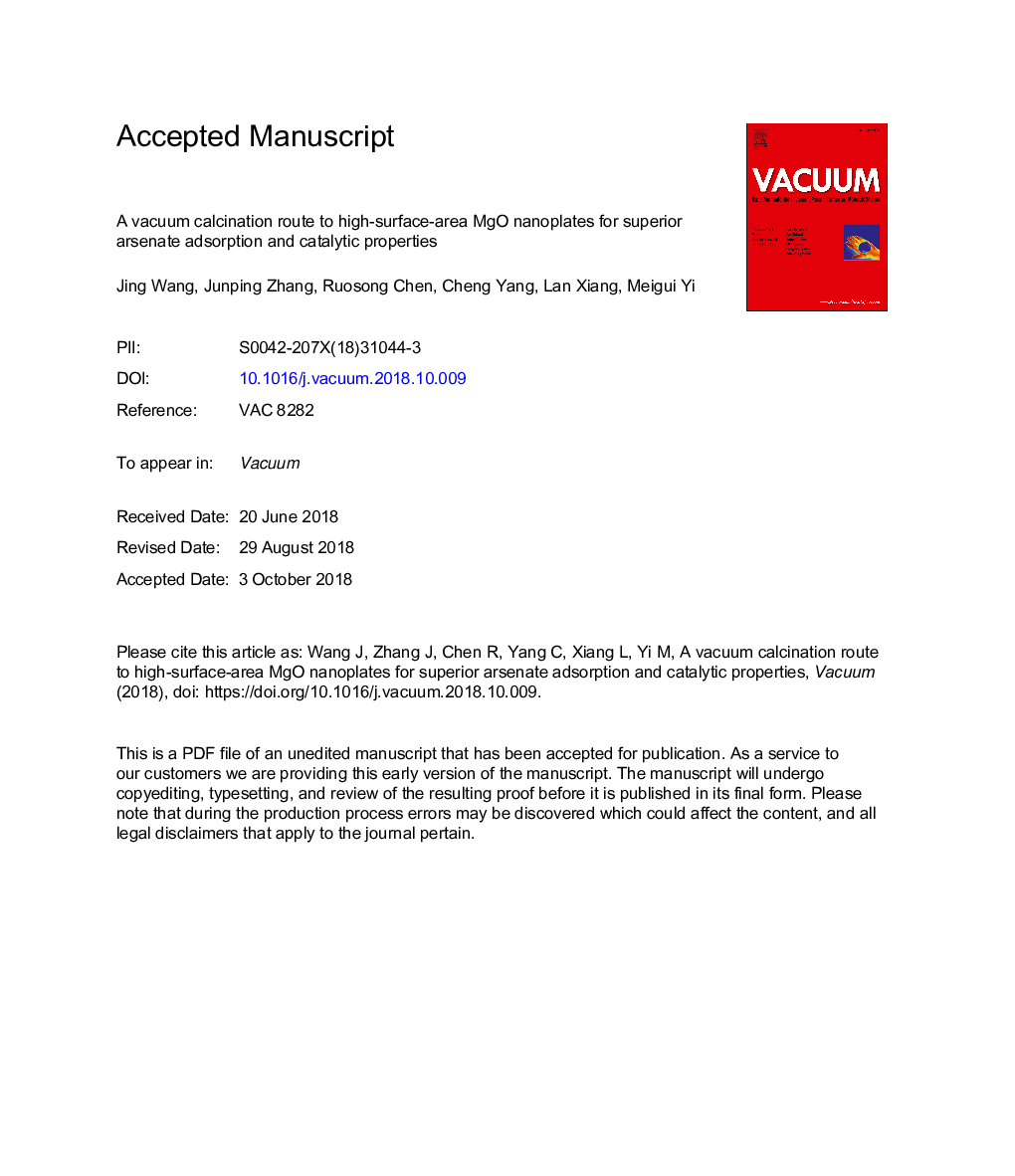| Article ID | Journal | Published Year | Pages | File Type |
|---|---|---|---|---|
| 11026556 | Vacuum | 2018 | 19 Pages |
Abstract
Porous MgO nanoplates with high surface area has been synthesized by a vacuum calcination route using industrially available Mg(OH)2 as the precursor. The vacuum calcination not only promoted the phase transformation of Mg(OH)2 to MgO at a low temperature (300â¯Â°C), but also inhibited the thermally-induced particle growth and pore coalescence, leading to the formation of MgO nanoplates with fine grain sizes (5.5â¯nm), ultrasmall pores (2-4â¯nm) and high surface area (390â¯m2â¯gâ1). The as prepared MgO nanoplates exhibited superior arsenic adsorption properties with a maximum adsorption capacity of 481.0â¯mgâ¯gâ1, as well as excellent catalytic activity for the Claisen-Schmidt condensation reaction.
Related Topics
Physical Sciences and Engineering
Materials Science
Surfaces, Coatings and Films
Authors
Jing Wang, Junping Zhang, Ruosong Chen, Cheng Yang, Lan Xiang, Meigui Yi,
